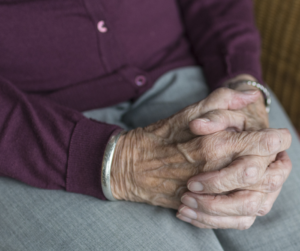
To say that the past several months have been stressful would be an understatement. Regardless of how you’ve been impacted by COVID-19 and the social distancing, isolating, and quarantining, you have undoubtedly been impacted. Some of us have seen restless nights of worrying about the health of loved one’s or ourselves, others have lost sleep worrying about their business. We have shared Zoom calls and half-way connections with our loved ones via technology, but still, even if we haven’t been quarantining alone, we undoubtedly have felt different. The longer our stay-at-home order has gone on, and the longer we’ve isolated ourselves, not just from people, but also places, the more we’ve grown restless and maybe even listless.
There’s a very very important parallel that is being drawn here though, that I fear many of us are missing.
 Think, for a minute, of an older loved one who lives alone. Perhaps they live near you, and before the pandemic, you made it a regular errand to visit and spend time with them. Perhaps they are states away. Either way, take a second to imagine how living alone as an older adult, especially one with medical concerns or limited mobility, may be very similar to what we have all been experienced lately.
Think, for a minute, of an older loved one who lives alone. Perhaps they live near you, and before the pandemic, you made it a regular errand to visit and spend time with them. Perhaps they are states away. Either way, take a second to imagine how living alone as an older adult, especially one with medical concerns or limited mobility, may be very similar to what we have all been experienced lately.
For an older adult living alone, there is little to look forward to. Getting out is less safe than it once was, and even a trip to the store can feel like a risk.
For an older adult living alone, visitors are few. They may have a caregiver or family member that comes in, but otherwise, the number of interactions they have are very limited.
For an older adult living alone, there is no distraction of work or children to occupy the time. Instead, they struggle to find purpose and agency.
If you’re not seeing the parallel yet, or if the older adult you’ve imagined doesn’t have circumstances that match this (yet), take a minute to imagine whatever limits your loved one does have (physical, social, emotional, etc) and how they may have been amplified by the pandemic. A senior who still drives and volunteers at the local senior center has lost both the autonomy and independence that comes from feeling useful in this way. A senior who cares for their grandchildren may no longer feel safe leaving the home. The reality of this is, that while the pandemic and isolation will end, unfortunately there will still likely be a time where these freedoms are lost for our loved ones, and if they are living alone at home, we are limited in the interventions we can use to remedy this.
So here again is where I advocate for community living. During the quarantining that has come from COVID-19, a forgotten section of the senior serving population has been the senior living community. This is different than Skilled Nursing Homes, which have been all over the news. In quite a contrast, the infection control and intense focus on wellness at senior living communities has been over-the-top noteworthy, yet hasn’t really been noted. These communities have, in many cases, been able to maintain abundant programming calendars, keep residents safely able to interact with each other, and increased the personalization of dining, recreation, and care programs. True, families haven’t been able to have in-person visits, but there are staff on hand ready and willing to facilitate FaceTime calls and the like.
Imagine you were going to simulate what it’s like to be an older adult living at home. How would you change your behavior and limitations. How do you think that would impact your mindset and attitude? After months of us basically living in this simulation, we see how ready we feel to get out, to get back, and to get going. We are feeling isolated, depressed, and scared. But I’m inviting you to take some time, before this is over, to reflect on what we can learn about how this has made us feel, and how our loved ones may have already been feeling. If we don’t learn and grow through what we go through, we’ve wasted the opportunity.
As always, please reach out if you or a loved one could benefit from talking.
